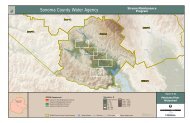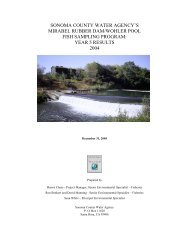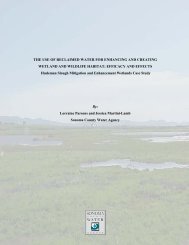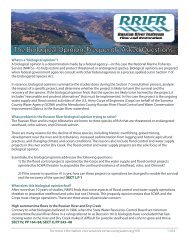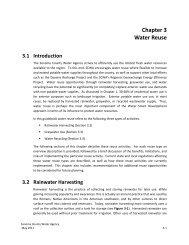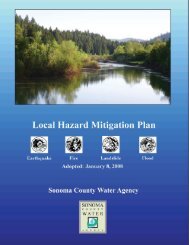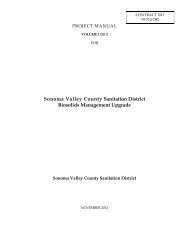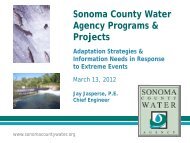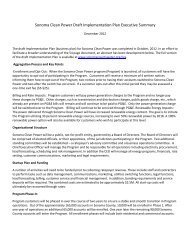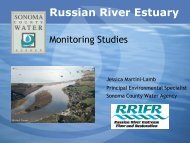Hydrography of the Russian River Estuary - Sonoma County Water ...
Hydrography of the Russian River Estuary - Sonoma County Water ...
Hydrography of the Russian River Estuary - Sonoma County Water ...
You also want an ePaper? Increase the reach of your titles
YUMPU automatically turns print PDFs into web optimized ePapers that Google loves.
Histograms <strong>of</strong> <strong>the</strong> probability <strong>of</strong> flow rates for a given hydraulic head (Figure 3.6)<br />
provide more insight to this relation. Although <strong>the</strong>re is a monotonic increase in mean<br />
seepage rate with increased elevation head, <strong>the</strong> increase is greatest as elevation head<br />
increases from 2-3ft to 3-4ft. For <strong>the</strong> remaining Δh brackets, <strong>the</strong> increase in seepage is<br />
notably smaller. Although this may be an error because wave-overwash events were not<br />
successfully excluded for lower elevation heads, this is not a problem for <strong>the</strong> estimates<br />
at higher elevations.<br />
Figure 3.6. Distributions <strong>of</strong> estimated flow loss at various differences between estuary<br />
and ocean water levels (Δh).<br />
The exact nature <strong>of</strong> <strong>the</strong> stage-discharge curve for seepage is likely to be non-linear and<br />
may be quite complex. For example, <strong>the</strong> sudden increase in flux as stage rises past 3ft<br />
suggests that a horizon <strong>of</strong> high conductivity is found at this level (e.g., permeable rip-rap<br />
used as a foundation for <strong>the</strong> jetty). However, any decrease in conductivity at higher<br />
elevations is countered by an increase in hydraulic gradient due to narrowing <strong>of</strong> <strong>the</strong><br />
21





